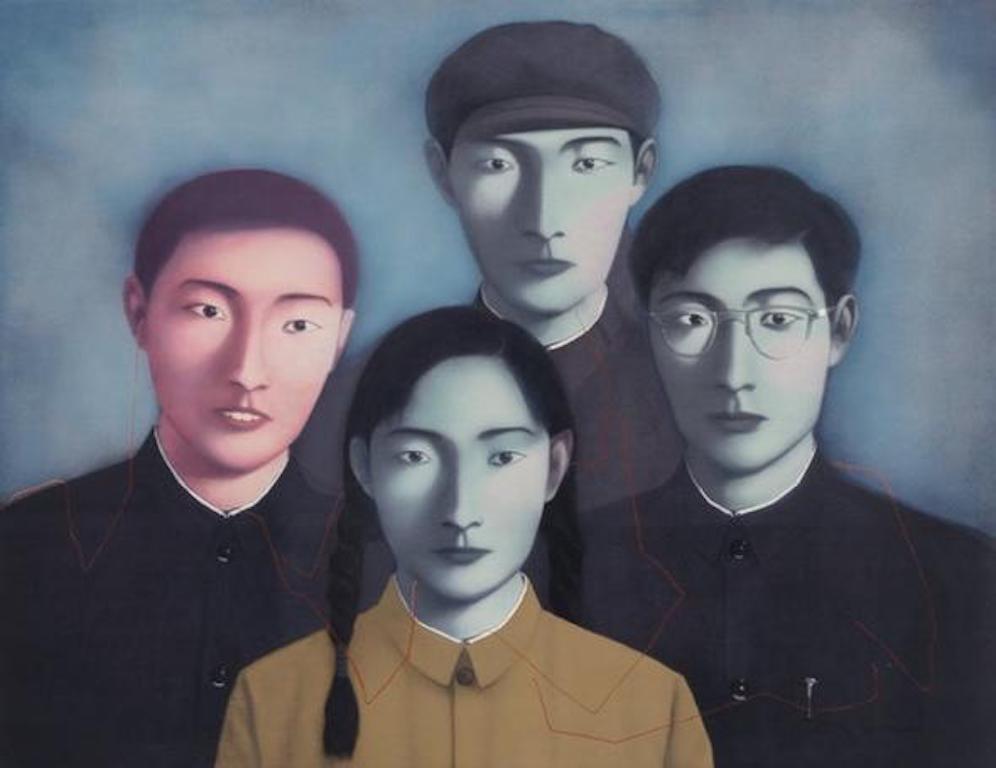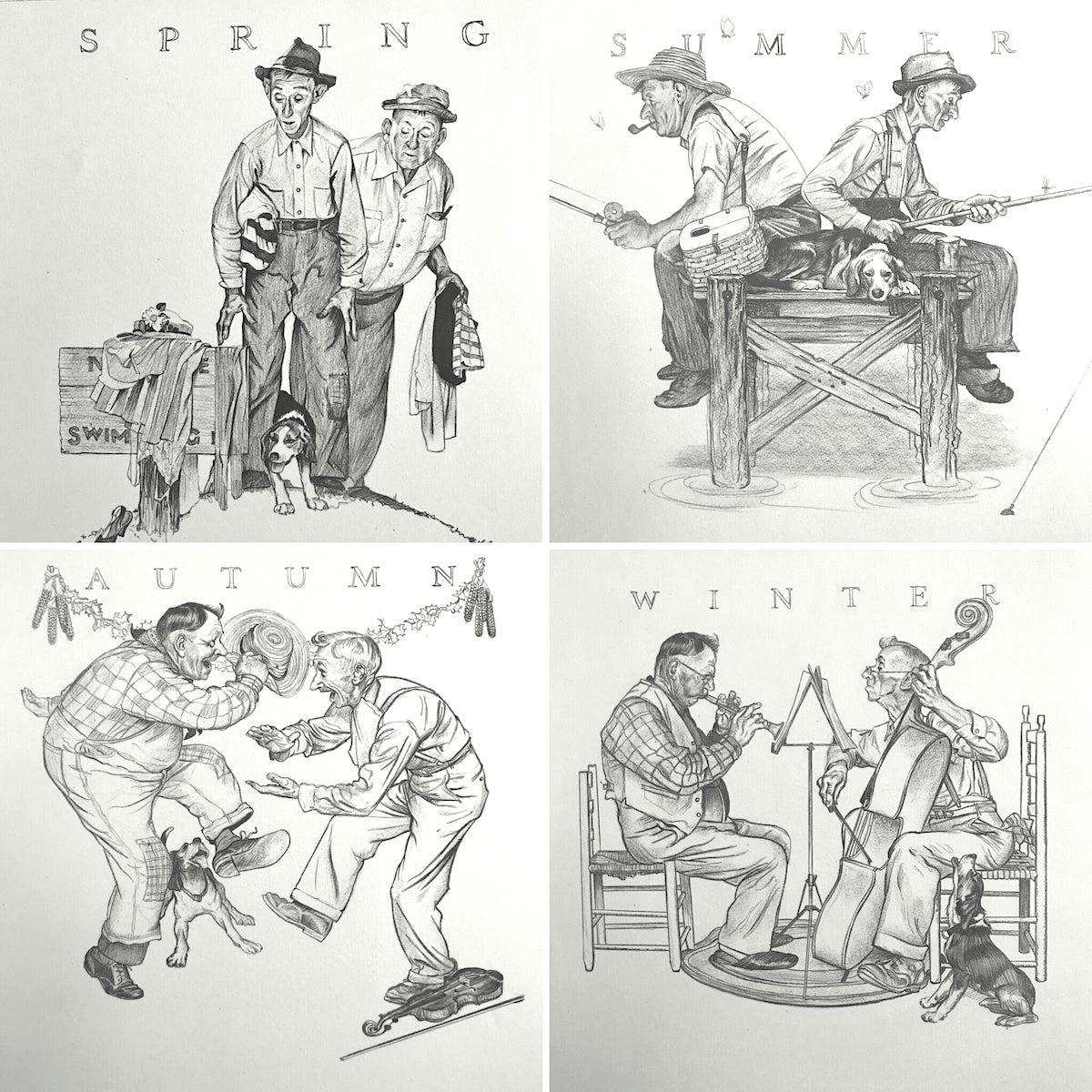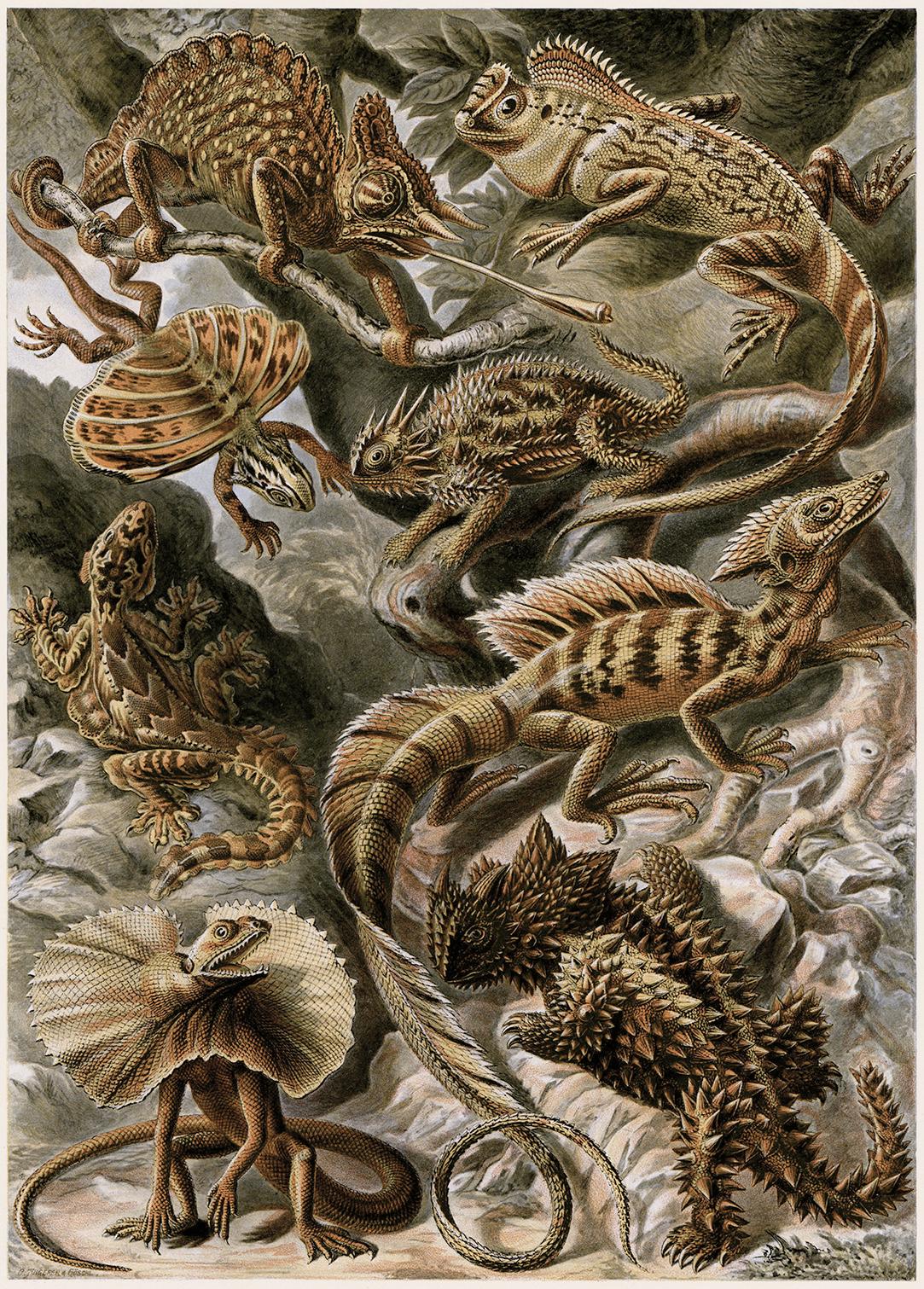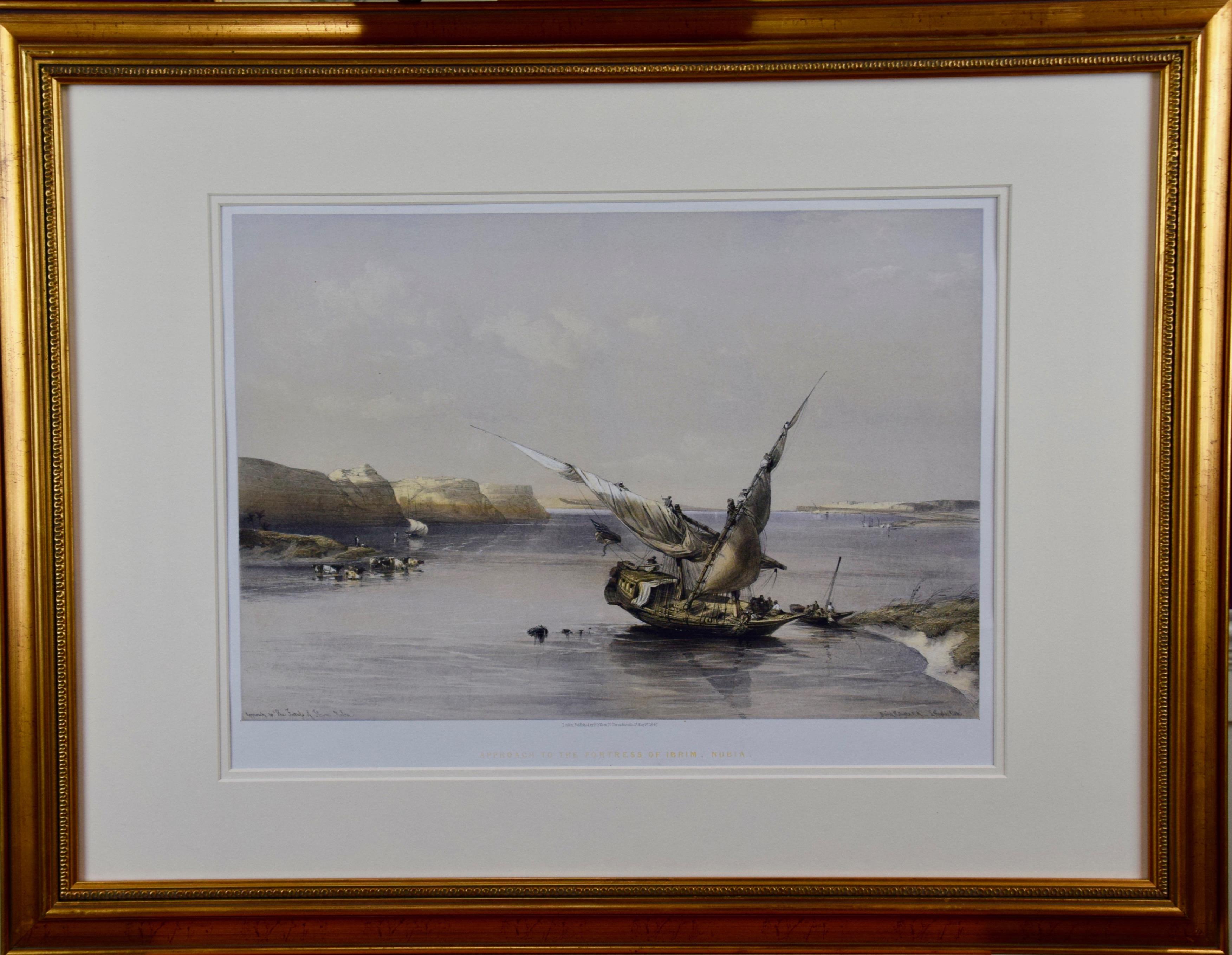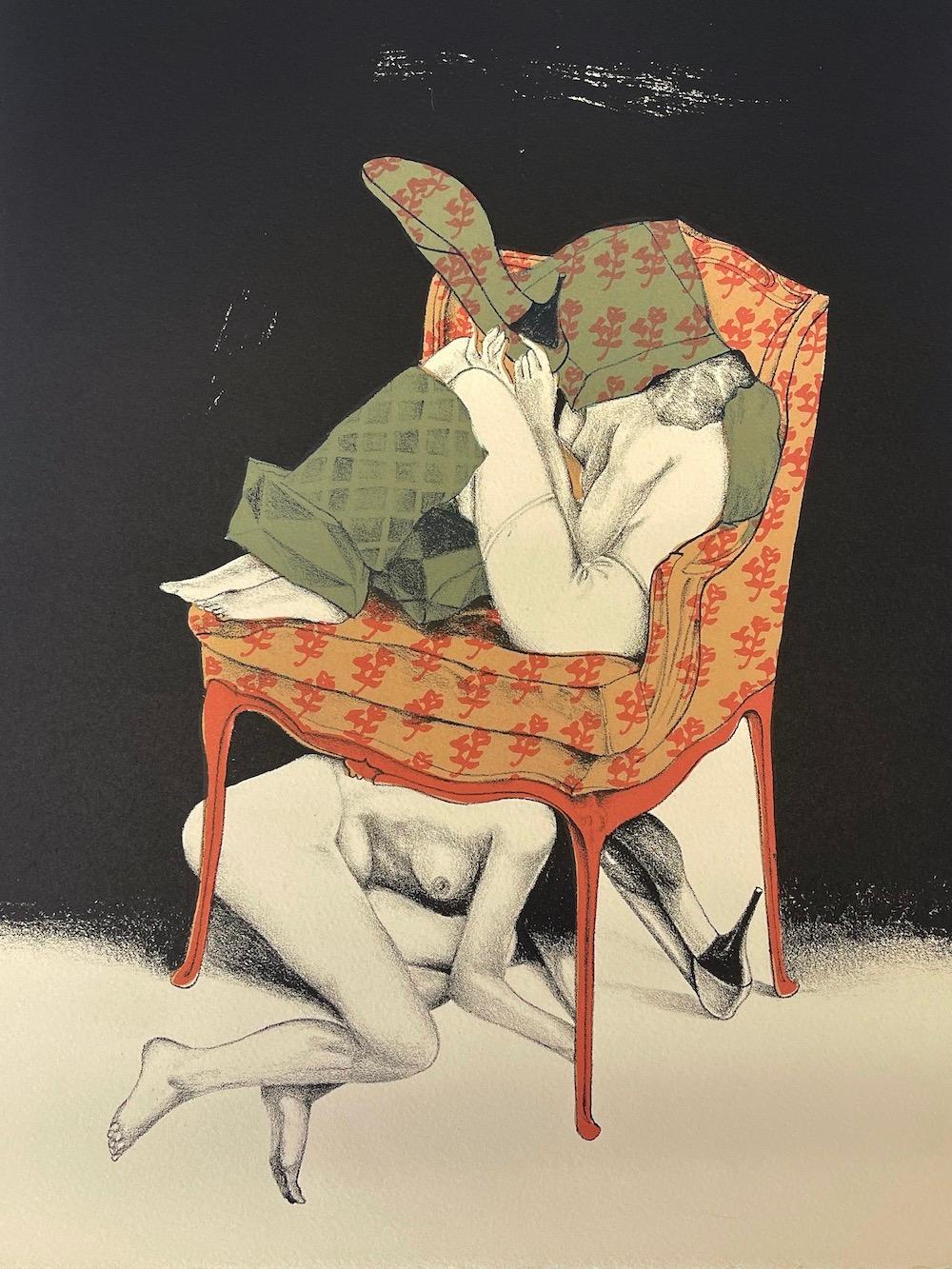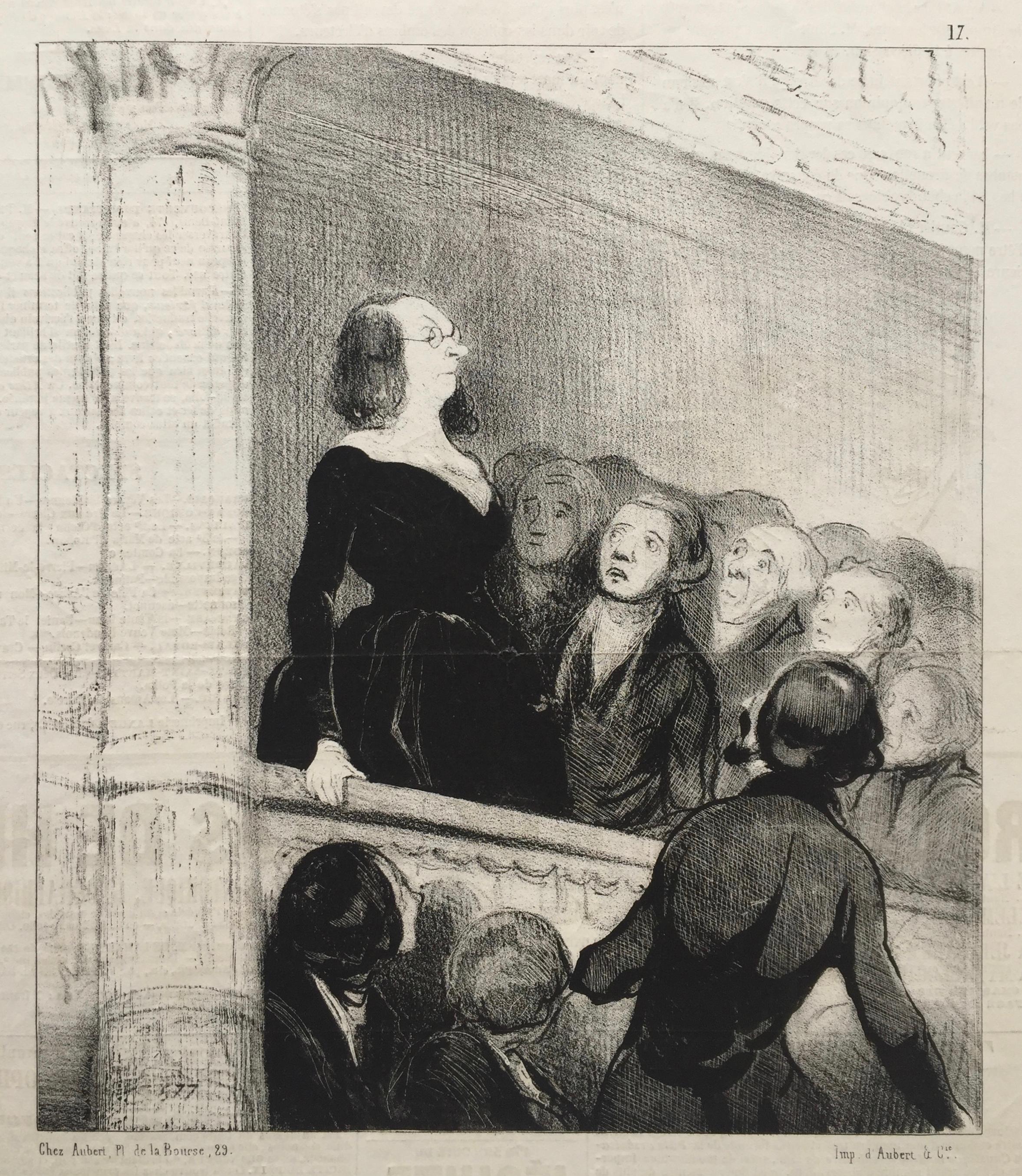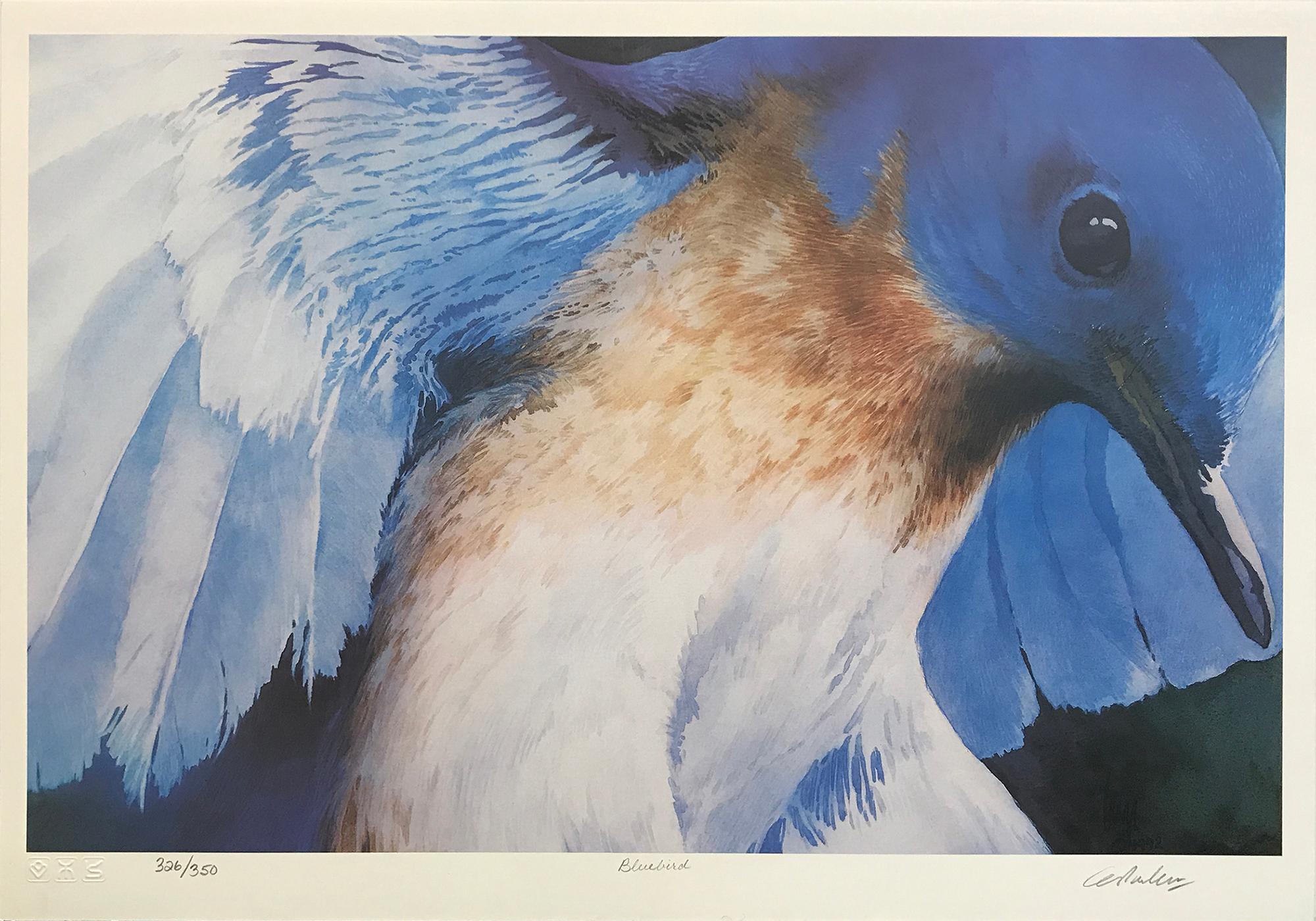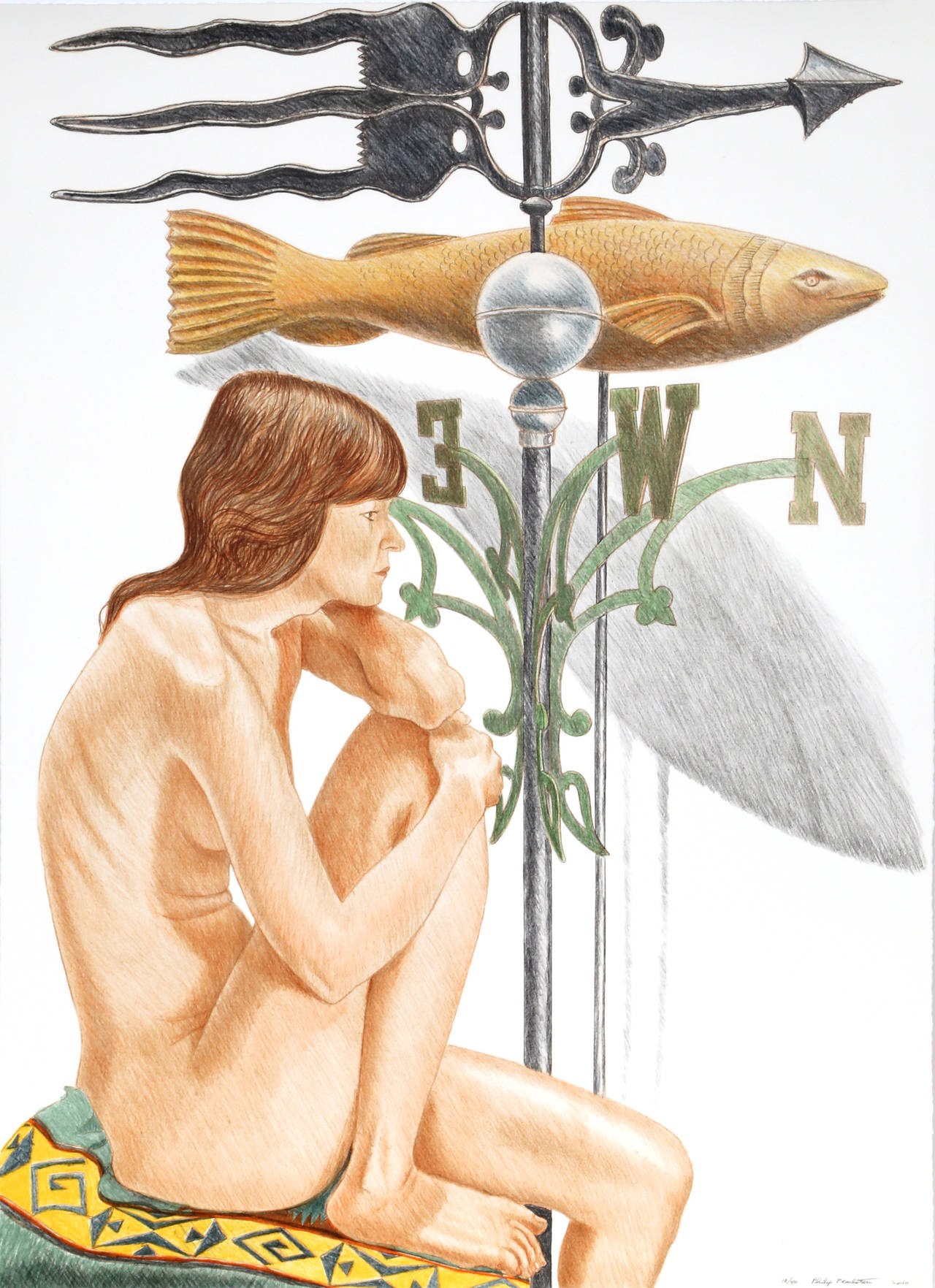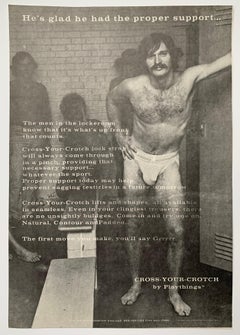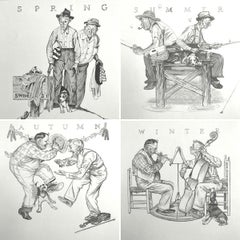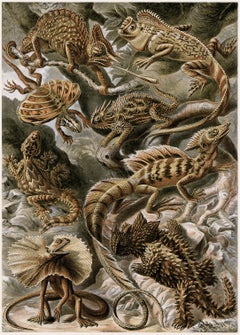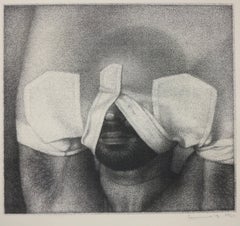
Man Undressing (black male nude)
View Similar Items
Want more images or videos?
Request additional images or videos from the seller
1 of 8
Michael LeonardMan Undressing (black male nude)1991
1991
About the Item
- Creator:Michael Leonard (1933, British)
- Creation Year:1991
- Dimensions:Height: 31 in (78.74 cm)Width: 23.5 in (59.69 cm)Depth: 1 in (2.54 cm)
- Medium:
- Movement & Style:
- Period:
- Condition:
- Gallery Location:Wilton Manors, FL
- Reference Number:1stDibs: LU24522000293
About the Seller
4.9
Vetted Seller
These experienced sellers undergo a comprehensive evaluation by our team of in-house experts.
Established in 2007
1stDibs seller since 2015
321 sales on 1stDibs
Typical response time: 3 hours
More From This SellerView All
- Portrait of a Young Girl (the artist's daughter).By Joseph FlochLocated in Wilton Manors, FLJoseph Floch (1894-1977). Young Girl, c.1930s. Lithograph on paper, plate measures 9 1/8 x 13 3/4 inches. Measures 17 x 21 inches framed. Excellent condition with no damage or conser...Category
1930s Realist Figurative Prints
MaterialsLithograph
- Undergarment Model (1970s Gay Bathhouse Jockstrap Ad)Located in Wilton Manors, FLVintage jockstrap ad poster, 1975. Offset lithograph on paper measures 18.5 x 12.75 inches. Copyright Winifred Bonney. Original offset period print on perio...Category
1970s Realist Figurative Prints
MaterialsOffset
$1,170 Sale Price35% Off - Didn't He Ramble? (Jazz Musician Trumpet Player)Located in Wilton Manors, FLWhitford Carter (1915-1973). Didn't He Ramble?, 1964. Lithograph on paper, image measures 13 x 17 inches; 19 x 22 inches in original frame. Signed, dat...Category
Mid-20th Century American Realist Figurative Prints
MaterialsLithograph
- MalachBy Jerome KaplanLocated in Wilton Manors, FLJerome Kaplan (1920-1997). Malach (Angel), 1952. Lithograph on wove paper. Image measures 15 x 19 inches; 23 x 28 inches in custom shadowbox frame with custom beveled linen matting. ...Category
Mid-20th Century Abstract Abstract Prints
MaterialsLithograph
$400 Sale Price20% Off - Sunday MorningLocated in Wilton Manors, FLSunday Morning. Title: Sunday Morning Artist: Dox Thrash (American, Griffin, Georgia 1893–1965 Philadelphia, Pennsylvania) Printer: Sam J. Brown (1901-1994). Date: ca. 1939. Medium: Drypoint Dimensions: sheet: 12 5/8 x 10 5/8 in. (32 x 27 cm) plate: 8 7/8 x 7 7/8 in. (22.5 x 20 cm) This is the most heavily inked, atmospheric example known to exist. Unique, unsigned example from the collection of artist Samuel J. Brown. Dox Thrash (1893–1965) was an African-American artist who was famed as a skilled draftsman, master printmaker, and painter and as the co-inventor of the Carborundum printmaking process.[1] The subject of his artwork was African American life. He served as a printmaker with the W.P.A. at the Fine Print Workshop of Philadelphia. The artist spent much of his career living and working in Philadelphia, Pennsylvania.[1] Early life Dox Thrash was born on March 22, 1893, in Griffin, Georgia.[2] He was the second of four children in his family. Thrash left home at the age of fifteen in search of work up north. He was part of the Great Migration (African American) looking for industrial work in the North. The first job that Thrash got was working with a circus and a Vaudeville act. In 1911, at the age of 18, he moved to Chicago, Illinois.[3] He got a job as an elevator operator during the day, and used this source of income to attend school.[3] In 1914 he attended the School of the Art Institute of Chicago.[1] In 1917, the United States declared war on Germany and entered World War I. In September 1917, at the age of twenty-four, Thrash enlisted in the army.[3] He was placed in the 365th Infantry Regiment, 183rd Brigade, 92nd Division, also known as the Buffalo Soldiers.[1] During combat, Thrash suffered shell shock and a gas attack, but was not permanently injured. Career as an artist Front cover of Dox Thrash: An African American Master Printmaker Rediscovered, by John Ittmann. After having served in the war, Thrash qualified as a war veteran and enrolled in the Art Institute of Chicago with the support of federal funding.[3] After finishing his education, he traveled intermittently from Georgia to Chicago, Boston, New York, and finally Philadelphia, working odd jobs - experiences that provided him with subject matter to later paint. Settling in Philadelphia by 1925, he took a job working as a janitor. In his free time, he continued his art career and used his talent to create emblems, such as the one for the North Philadelphia Businessmen's Association, and posters in exhibitions and festivals, including the 2nd Annual National Negro Music Festival and the Tra Club of Philadelphia.[1] This gained him local recognition and opened doors for new artistic endeavors. By 1929, Thrash was attending nightly classes within these clubs, namely with Earl Horter of the Graphic Sketch Club, now known as the Samuel S. Fleisher Art Memorial.[3] In 1937 Thrash joined the government-sponsored Works Progress Administration (WPA)'s Federal Art Project.[4] Through the WPA, Thrash began working at the Fine Print Workshop of Philadelphia.[5] At the Fine Print Workshop of Philadelphia, Thrash, along with Michael J. Gallagher and Hugh Mesibov, began experimenting and co-inventing the process of carborundum mezzotint, a printmaking technique.[1] Carborundum printmaking uses a carbon-based abrasive to burnish copper plates creating an image that can produce a print in tones ranging from pale gray to deep black. The method is similar to the more difficult and complicated mezzotint process developed in the 17th century. He used this as his primary medium for much of his career and created his greatest works with it. One of his first pieces employing this nascent technique was his anonymous self-portrait entitled Mr. X. With this new technique, the three gained increasing recognition as they published more and more graphics within newspapers and featured more and more pieces within exhibitions. Their works often featured subtle commentaries about social and economic exploitation regarding the contemporary politics of the Great Depression and the Second World War. By 1940, Thrash, Gallagher, and Mesibov all began to gain attention in local circles for their carborundum prints, although the role that each artist played in the development of the process was left unclear.[6] In 1960, Thrash participated in a show at the Pyramid Club, a social organization of Black professional men that held an annual art exhibit starting in 1941. Others on hand were Howard N. Watson, Benjamin Britt, Robert Jefferson and Samuel J. Brown Jr. Thrash spent the later years of his life mentoring young African American artists. He died on April 19, 1965, in Philadelphia, Pennsylvania.[2] He was posthumously honored almost 40 years later in 2001 with a major retrospective, titled Dox Thrash: An African-American Master Printmaker Rediscovered, at the Philadelphia Museum of Art.[7] Thrash's work was included in the 2015 exhibition We Speak: Black Artists in Philadelphia, 1920s-1970s at the Woodmere Art Museum.[8] Relation to Alain Locke and the New Negro Movement This section needs additional citations for verification. Please help improve this article by adding citations to reliable sources in this section. Unsourced material may be challenged and removed. (June 2022) (Learn how and when to remove this template message) Alain LeRoy Locke (1885-1954) was an intellectual, professor and author who espoused that African Americans, specifically artists, to capture the personality, lives, and essence of their people in The New Negro. He explained “The Negro physiognomy must be freshly and objectively conceived on its own patterns if it is ever to be seriously and importantly interpreted. Art must discover and reveal the beauty which prejudice and caricature have overlaid.”[9] What Locke is expressing here is not only the call for black artists to overcome racial prejudices via positive artistic representations of blacks, but that the actual African American individual like Thrash portrayed the lives of fellow blacks, and had the power to propagate this idea of the New Negro, as Locke explains, “There is the possibility that the sensitive artistic mind of the American Negro, stimulated by a cultural pride and interest, will receive…a profound and galvanizing influence.”[10] In his shadowy carborundum mezzotint Cabin Days, Thrash depicts a southern black family on the porch of their shack-like home in a rural landscape. The man, woman, and child, clutched tenderly to the female figure's breast, create an intimate scene highlighted by the bright cleanliness of the laundry hanging behind them. Placed in front of the drying laundry, they are framed by one aspect of the hard work accomplished during the day. Close to one another, staring collectively outward at the Southern landscape, they, and their laudable priorities of cleanliness and family, are made the bright focal point in the poor, unstable atmosphere. Such inner warmth is seemingly incompatible with the family's crooked and disheveled surroundings, and their fuzzy appearance with a lack of facial detail makes the scene into a general archetype for rural southern blacks living conditions and qualities. Thrash was referencing an experience common to thousands of black families in rural occupations at the turn of the 20th century, often forced into slavery-like tenant farming as their only means of livelihood in the racist South. The “uneven clapboards, leaning porch, broken shutter, and uprooted fence” are rife with instability, much like the post-slavery economic and social systems of the South, making it clear that for African Americans, “the house is not the home; rather, the figures on the porch represent family unity and continuity”.[10] In this way, Thrash is able to not only champion the positive qualities of blacks in the family setting but underscore this with a symbolic look at their disadvantaged situation, making it all the more impressive that they persevere. Thrash symbolically depicted harsh realities for the African American at this transitional point in history while conferring a sensitive rendering of their humanity, akin to any other race, despite its utter denial by American society. Through softer tempera washes like A New Day, he literally and figuratively paints a picture of a black family transitioning from the South to the North during the Great Migration, making a hopeful, daring leap to attempt to be equal members of the society that has historically oppressed them. On the left side of the canvas lie muddled farm houses and plow handles, embodiments of their rural life of tedious hard labor behind them, fading to gray. Their hopeful gazes “…convey the optimism of the scores of African Americans who left the countryside to pursue better job opportunities, health care, and education in urban centers”.[6] The stance of the figures, with their chins raised in a dignified gesture towards cityscape ahead suggest a confidence and ambitiousness in their collective futures in this new northern industrial terrain. Even the child, clutched securely in the arm of the mother figure against her breast is not only serenely grinning, but calm enough to appear to gently doze, confident in that the journey ahead will result positively, poses no threat. The exposed arm of the woman is notable as well, being unusually thick and muscular, along with the general proportions of the kneeling father, who position on the ground appears not pleading but rather in a slightly exhausted, but upright gratefulness for the promise ahead. Thrash makes it clear that this family has traveled a long way, but is not depleted; rather they are strong and preparing for further hard work and hopeful success ahead. They are the quintessence of the New Negro, in that they are not only journeying forward to seize previously unobtainable opportunities that will enhance their lives, but the manner with which they hold themselves provokes a certain level of warranted respect for their humanity, from the viewer. In fact it was the strength of his fellow African Americans that Thrash often emphasized, amongst other positive characteristics in the face of adversity in personal portraits. Through his carborundum print Life, he depicts a neatly dressed black girl reading...Category
1930s American Realist Figurative Prints
MaterialsEtching
- Fillmore Psychedelic music posterLocated in Wilton Manors, FLOriginal Fillmore concert poster. 4-color screen print. Excellent condition. No fading or staining. The 1st poster was printed before the concert and measures 13 5/16" x 21 3/4".Category
1960s Abstract Figurative Prints
MaterialsScreen
You May Also Like
- Big Family No. 1, from Bloodline SeriesBy Zhang XiaogangLocated in New York, NY2006 Lithograph in colors, on cotton fiber paper Sheet: 40 x 14 1/2 in. Edition of 130 Signed and numbered in pencil UnframedCategory
Early 2000s Realist Figurative Prints
MaterialsLithograph
Price Upon Request - THE FOUR SEASONS 4 Hand Drawn Lithographs, American Illustration Art, AmericanaBy After Norman RockwellLocated in Union City, NJArtist: Norman Rockwell, American (1894 - 1978) Title: The Four Seasons: SPRING, SUMMER, AUTUMN, WINTER Medium: Hand Drawn Lithograph on Arches paper, 100% acid free Edition size: 200 THE FOUR SEASONS by the American artist illustrator NORMAN ROCKWELL, is a set of four hand drawn lithographs printed using hand lithography techniques on Velin d'Arches paper. The lithographs are UNSIGNED trial proofs bearing the printer's registration cross markings in print margins, from the master printers private collection. These 4 examples were taken to Stockbridge, Mass. and shown to Norman Rockwell for his approval prior to editioning. This suite is was published in an edition size of 200 prints by Circle Gallery, Chicago. Hand Proofed and printed at the American Atelier, New York, NY, Dec. 1974. Very fine impressions, exquisitely detailed drawings printed in a light pencil-gray colored ink on archival Arches printmaking paper, 100% acid free. SPRING portrays two old men and a beagle curiously examining a woman's clothing left on a NO SWIMMING sign...Category
1970s Realist Portrait Prints
MaterialsLithograph
- Art Forms in Nature (Plate 79 - Basiliscus) — 1899 Celebration of NatureLocated in Myrtle Beach, SCErnst Haeckel, 'Art Forms in Nature' (Plate 79 - Basiliscus), offset lithograph, 1899. Signed and titled in typeset, upper left. Titled 'Tafel 79 — Basi...Category
1890s Realist Figurative Prints
MaterialsLithograph
- VENDEDORA Signed Lithograph, Portrait Seated Young Girl, Mexican Fruit SellerBy Elizabeth CatlettLocated in Union City, NJVENDEDORA, a limited edition lithograph by the renowned American-born Mexican sculptor and printmaker Elizabeth Catlett(b.1915–2012) depicts a sensitive black and white portrait of a...Category
Early 2000s Realist Portrait Prints
MaterialsLithograph
- David Roberts' 19th Century Hand Colored Lithograph, "Fortress of Ibrim, Nubia"By David RobertsLocated in Alamo, CA"Approach to the Fortress of Ibrim, Nubia" is a 19th century folio sized hand-colored lithograph from the Egypt and Nubia volume of David Roberts’ large folio edition, published in London by F. G. Moon in 1847. The lithographs were prepared by Louis Haghe (1806-1885) from drawings and paintings by Roberts. The resultant large folio editions of 'The Holy Land' and 'Egypt & Nubia' are considered the greatest lithographically illustrated works issued in the 19th century. The print is presented in a gold-colored wood frame with a decorative inner trim, with a cream-colored double mat. It is in excellent condition. The lithograph depicts the Fortress of Ibrim in Nubia in the background, which had been a Roman and an Egyptian fortification for centuries due to its strategic elevation, allowing a view of large portions of the surrounding desert. Men are securing the boat in the foreground for the night, taking down its sails. A herd of cattle drinks and cools themselves in the water on the left. There are four additional listings of David Roberts engravings of Egypt...Category
1840s Realist Landscape Prints
MaterialsLithograph
- Two Nudes Posing With Armchair, Hand Drawn Stone Lithograph, Stiletto HeelsBy Mel RamosLocated in Union City, NJTwo Nudes Posing With Armchair is an original hand drawn stone lithograph attributed to the American Pop artist Mel Ramos, printed at Bank Street Atelier NYC circa 1970 using black, olive, tan and orange inks on Buff color ARCHES paper 100% acid free. Two Nudes Posing With Armchair is an unusual, almost surreal composition depicting two nude young women; one seated with knees bent, sitting sideways on top of a tan and orange print armchair; the other woman is scooched down underneath the chair. Two mysterious stiletto heel shoes are visible - one below the chair and one above in the seated woman's hands adding to the intrigue of this interior setting. Print size - 16.5 x 12 inches, unframed, excellent condition, full bleed image no margins, rare unsigned Printers Proof/Trial Proof from an unknown early edition, fine hand printed impression. Historic Note on Bank Street Atelier - Bank Street Atelier was founded in 1969 by George J. Goodstadt (Fine Arts Publisher) along with Jacques Mourlot, third generation of the famous Mourlot print shop in Paris, France. Bank Street Atelier became one of the premier lithography print studios in NYC at that time and became a major graphic center, which attracted many of the Modern American Masters of the 1970’s, including Alexander Calder, Willem deKooning, Red Grooms, Al Hirschfeld, Ellsworth Kelly, Romare Bearden, Fairfield Porter, Jasper Johns, Frank Stella, Alex Katz and many more. The resulting prints were produced with the highest quality and earned a reputation in the art world for professionalism and excellence in lithographic printmaking. About the artist - Mel Ramos(1935 - 2018, California) Mel Ramos is an American Pop artist best known for his female nudes painted alongside brand logos. The artist’s coupling of women with familiar products like martini glasses and bananas serves as a commentary on the ways in which capitalism has employed the female body. “I make sure that my pictures are not too erotic and that they always have a trace of humor,” he said of his work. “I make sure they are ‘in good taste.’ Either you understand it or not.” Born on July 24, 1935 in Sacramento, CA, Ramos like Roy Lichtenstein and Andy Warhol, found inspiration through the comic books Wonder Woman and Superman growing up and later pinup posters...Category
1970s Realist Figurative Prints
MaterialsLithograph
Recently Viewed
View AllMore Ways To Browse
Japanese Woodcut Modern
Old Vintage Windows
Outline Face
Costume Box
Old Vintage Window
Fashion Print Poster
1920s Etching
Erte A
Petersburg Lithograph
Salvador Dali 1980
Salvador Dali Signed Engraving
African Woman Print
Death In Venice Painting
Italian Woman Nude
Retro Style Graphics
1959 Framed Picasso
Salvador Dali Original Hand Signed
Flowers Warhol
